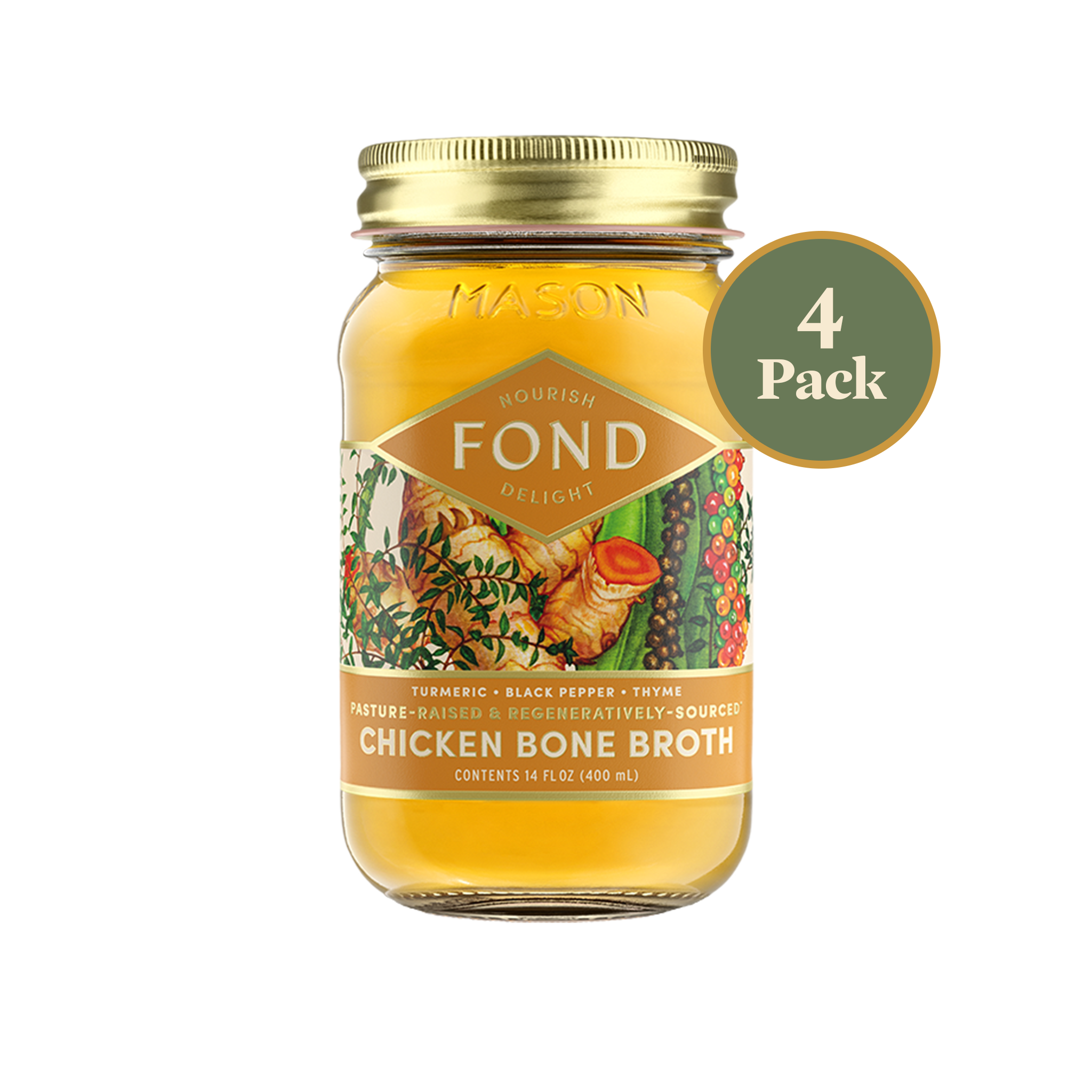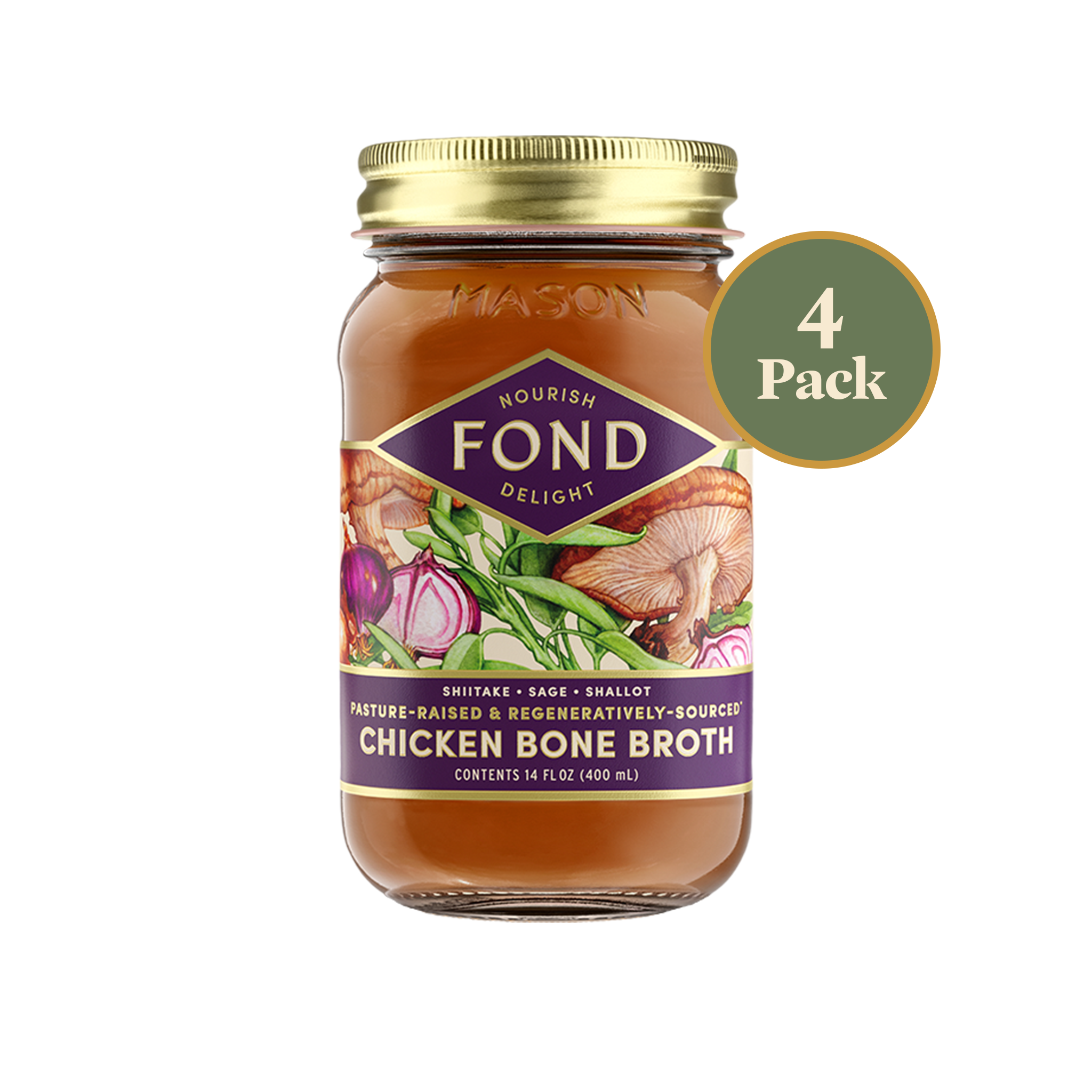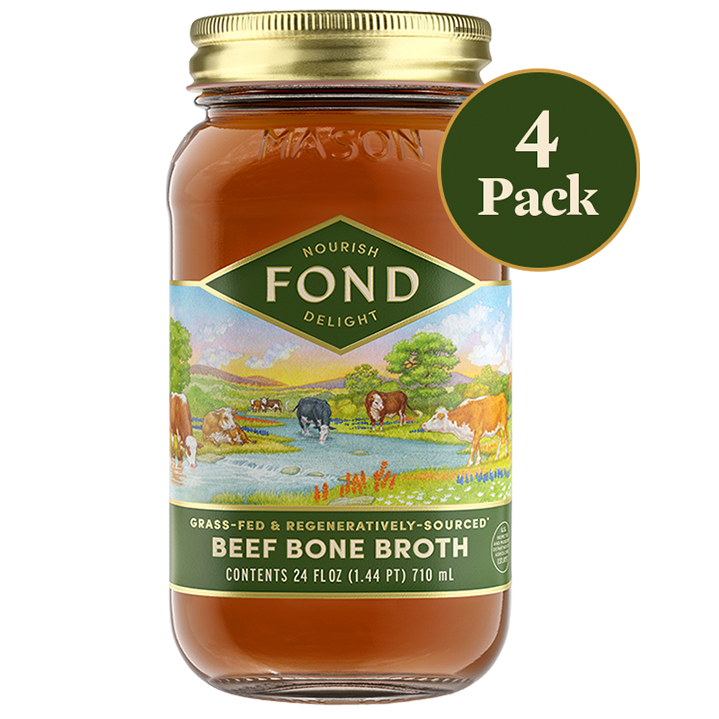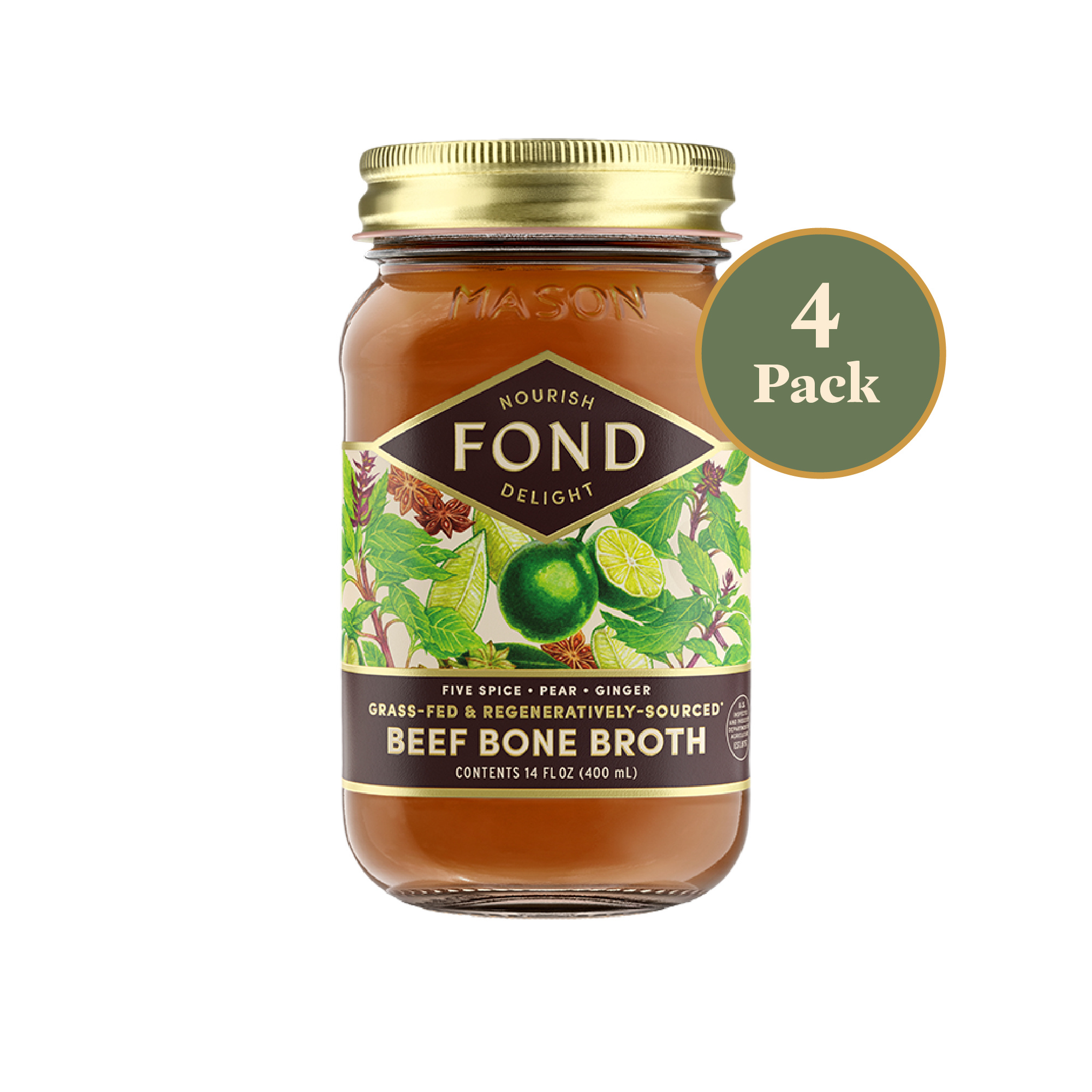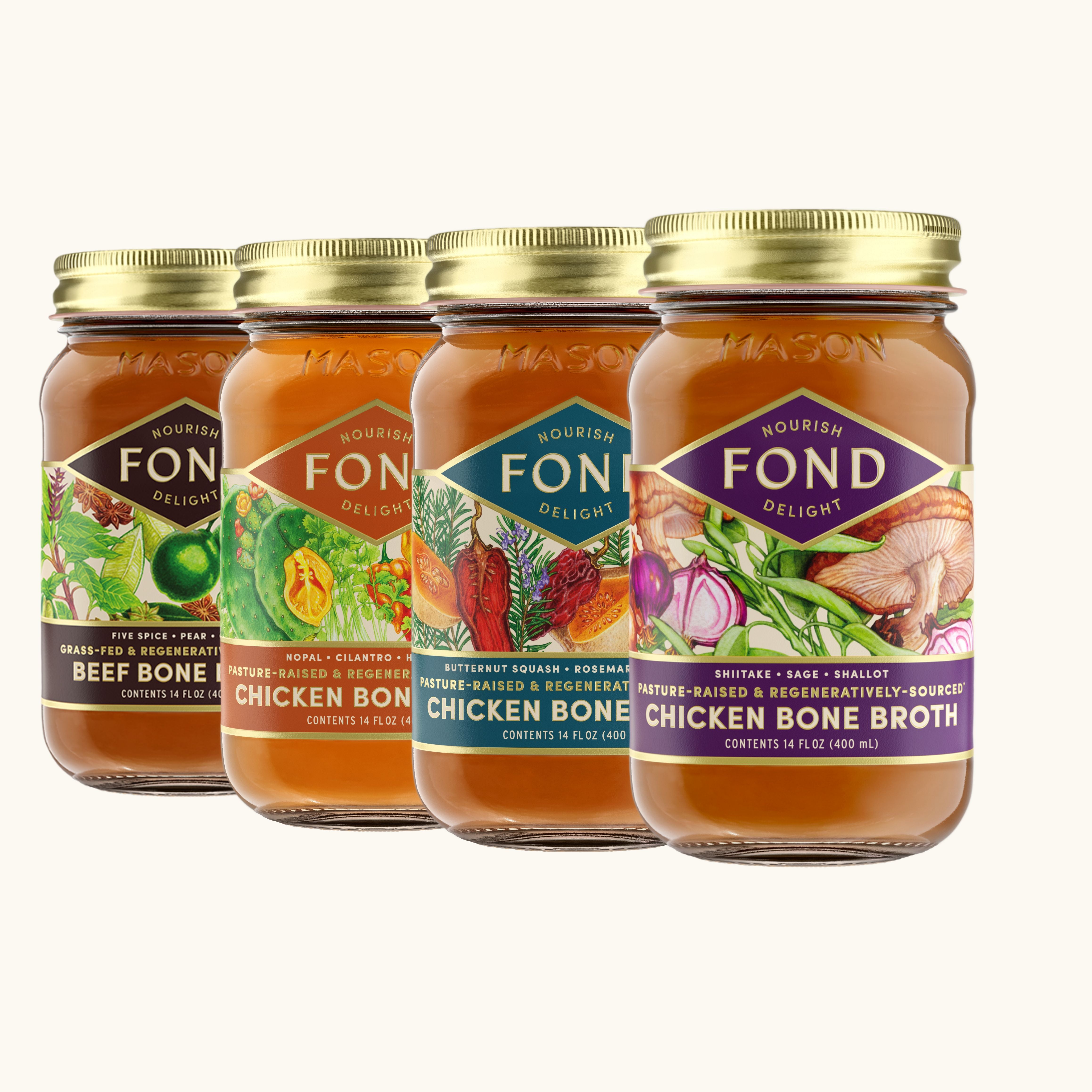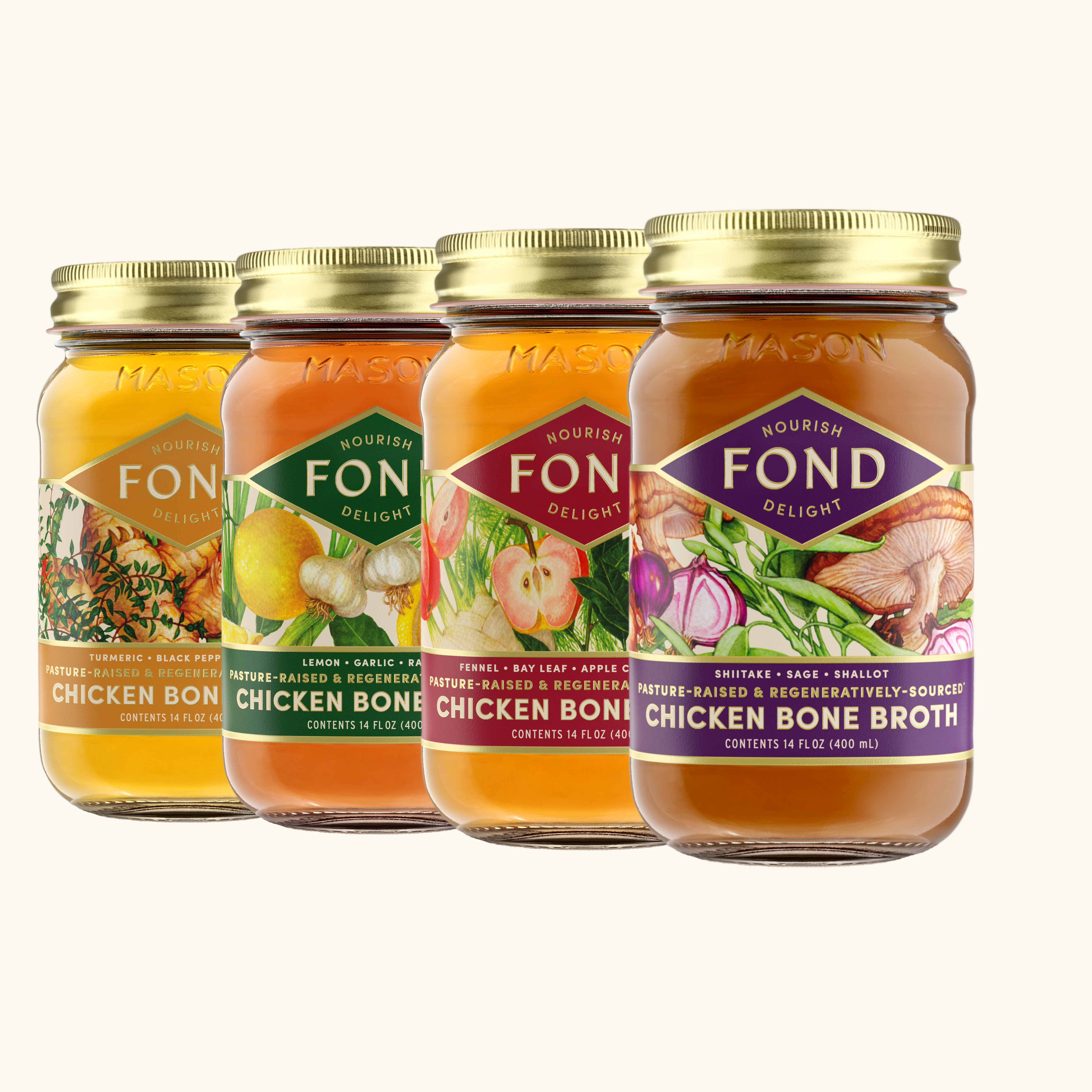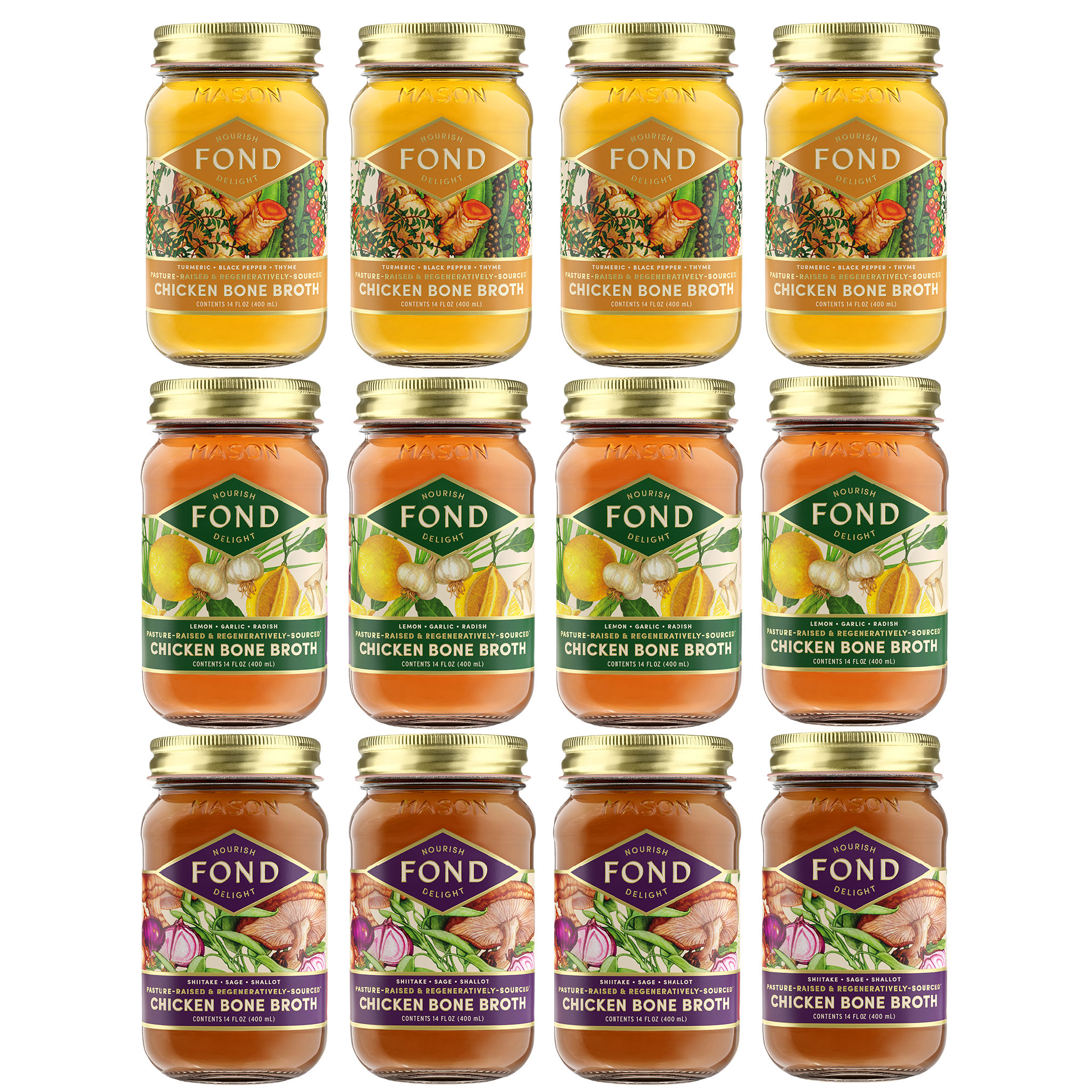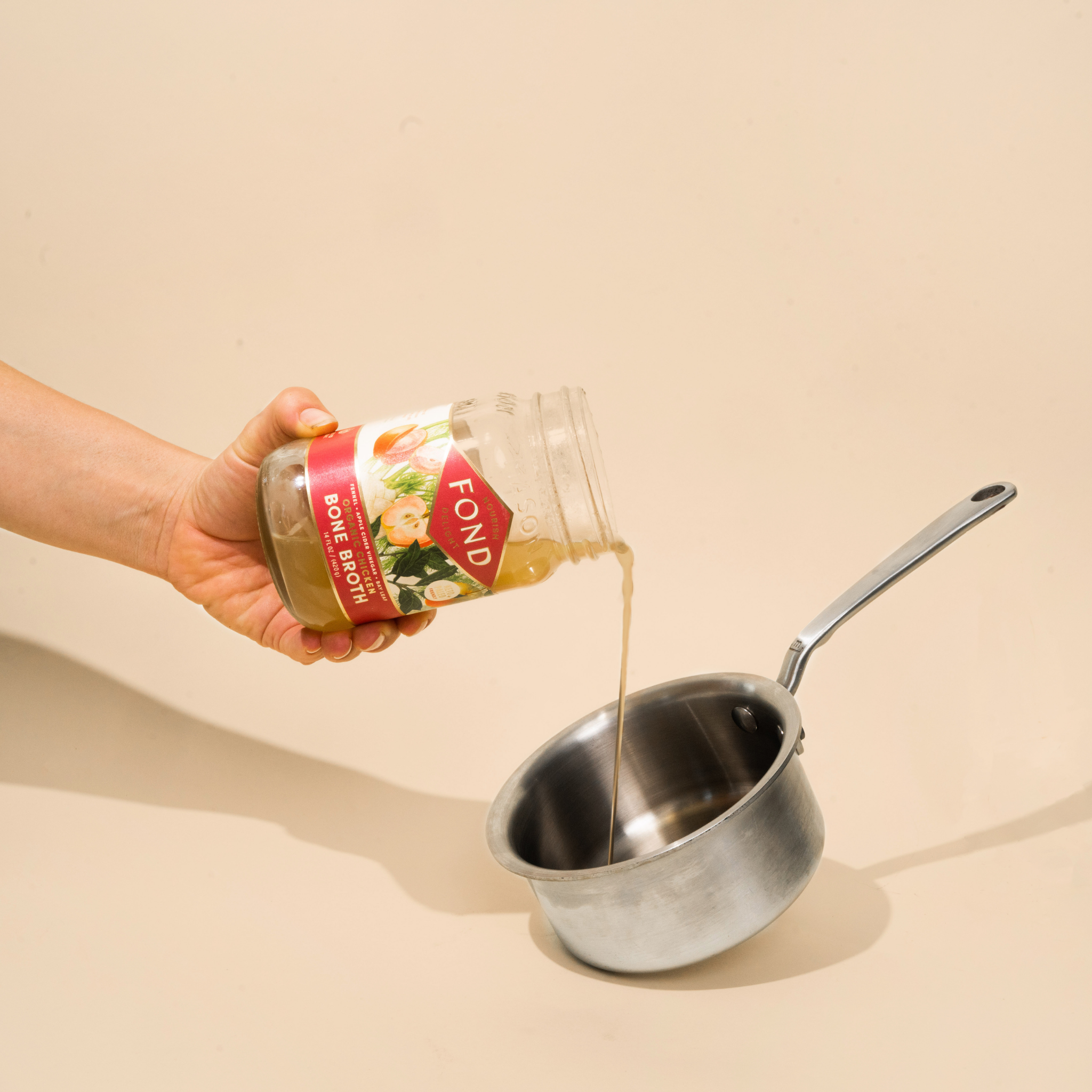The narrative around meat these days is polarizing, with camps firmly entrenched on either side: you’re either team “plant-based” or team “meat eater,” without much nuance or grey in between. There’s a trend that calls for the elimination of meat entirely, with legumes or lab meat in its place. Here at FOND, we’re not buying into the hype. We don’t believe that removing animals from our diets is the solution, and in fact think that removing meat will be to the detriment of our collective global health.
And while there are a lot of loud voices calling for a dramatic reduction in meat, from EAT Lancet to celebrities, there aren’t nearly as many on the other side, advocating for the nutrient-density of meat. So we’re raising our voices to support some of our heroes and partners, like Diana Rodgers of Sustainable Dish and Force of Nature Meats, who have been leading the charge.
While all beef is nutrient-dense (including beef that is finished on a feedlot), today we’re going to zero in on regeneratively-raised beef as one of the solutions to our climate crisis. While beef has been maligned for a wide range of reasons, from its supposed impacts on our health to the idea that even grass-fed beef substantially contributes to climate change, there’s a lot more nuance to the discussion than these talking points allow.
One point we are not talking enough about is the positive impact regeneratively-raised beef provides to both our health as well as our soil's health and ultimately the planet’s health.
What is regenerative agriculture?
Regenerative agriculture seeks to mimic the natural systems present in nature as closely as possible. This means moving away from the monoculture crops that are pervasive in our current farming system and moving to a system that includes cover crops, livestock, crop rotation, and more.
Regenerative agriculture focuses on improving the soil through better farming and ranching practices that provides a host of benefits, including:
- Sequestering carbon to reverse climate change
- Producing more nutritionally dense foods for a growing population
- Reducing flooding and drought
- Improving air and water quality
Animals play an essential role in regenerative systems. You can read more about how animals play an essential role in a regenerative system from our friends at Force of Nature.
Here are five key principles of regenerative agriculture from Gabe Brown, a North Dakota regenerative farmer.
- Minimize or eliminate tillage (since any tilling into the ground releases carbon into the atmosphere)
- Keep the soil surface covered to eliminate erosion
- Keep living plant roots in the soil as long as possible
- Increase biodiversity
- Integrate livestock
There are also other variables considered in a regenerative farm system, including labor (improving working conditions and wages for farmworkers), decentralizing the supply chain, and opening up more processing plants to support smaller producers.
How does regeneratively-raised beef help reverse climate change?
Though there are claims that beef uses more water than any plant food, that cow manure contribute massive amounts of greenhouse gases, and many, many more, as with most things, this is simply not the full story.
Water use
The discussion on water usage for raising cattle largely avoids the discussion of green water versus blue water. Green water is primarily rainfall, while blue water is groundwater from aquifers and rivers that’s used for irrigation. In “conventional” cattle production, about 92% of the water used is green water, and the number for 100% grass-fed beef climbs to 97-98%. Conventional beef requires about 410 gallons of water/lb to produce (in line with avocados, rice, walnuts, and sugar, which are much less nutrient-dense). When it comes to grass-fed beef, the amount of water used is closer to 100 gallons per lb. Contrast this with the above plant crops, as well as tree nuts like almonds, pistachios and walnuts, three incredibly water-intensive nuts.
And of course, this discussion completely ignores the positive impact that grass-fed animals have on soil health and the overall ecosystem.
Soil health
Diana Rodgers explains how cattle support soil health best:
“Cows urinate and poop, which adds water and microorganisms to the soil, increasing biodiversity underground and helping to sequester carbon. Cattle grazing stimulates grass growth, which is good for the health of the pasture. They walk on the ground, which allows for rain water to pocket and seed germination to take hold. None of this happens in a chemical, monoculture system of farming. In the absence of herbivore manure, scientists are actually now experimenting with inoculating soil with microbes.
In my book, I refer to soil as a bank account. Cropping the soil (like planting vegetables) withdraws nutrients, and with each harvest, and you need to replenish the account. Conventional agriculture does this poorly with chemical fertilizers, producing GHG (greenhouse gas) emissions, which are largely overlooked when people are singing the praises of eating vegetables. Home gardeners and organic farmers know that the best way to improve the soil bank is to add compost, ground bone, blood, and animal manure. Properly managed herbivores are also adding to the soil bank in a natural way.”
In short, grass-fed cows are a very good thing for the soil and overall ecosystem.
We love this little graphic from Diana showing this process in action.

And as a quick aside - if you do have to purchase conventional meat due to budget constraints, beef is actually the most humane option, especially when compared to chicken/poultry and pigs. Many cows are raised on grass for the early part of their lives, then moved to a feedlot for 3-6 months to fatten them up to slaughter. By contrast, conventionally-raised poultry and pigs are often in cages/crates (or just packed into crowded barns) without any access to the outdoors for their entire lives. Combine that with the nutrient-density of beef, and it’s a great option for the budget-limited among us. Just opt for lean cuts or drain off the extra fat.
What are the benefits of beef?
When it comes to nutrient deficiencies here in the US, the most common are iron, vitamin D, and B vitamins. And guess what? Beef is an incredible source of many of these nutrients. The nutrients in meat are also far more bioavailable (easy to use) for your body compared with those found in plant foods. And beef is also a great, bioavailable source of protein and other crucial nutrients like zinc, omega-3 fatty acids, and CLA (conjugated linoleic acid).
What are the benefits of beef bone broth?
When it comes to our beef bone broths, the benefits are vast!
- Supports connective tissues (skin, intestines, uterus, lungs, vascular), skin firmness/elasticity, cardiovascular health.
- Rich in collagen and great for skin health.'
- High concentration of minerals from the nutrient-dense bones of cattle.
- Balanced omega-3:omega-6 ratio.
What can you do in your own life to make a difference?
Here are some great tips from our friends at Force of Nature.
- Support companies that support regenerative farmers. The single most impactful thing you can do is vote with your dollars. Every single time you make a purchase, you are supporting a system that is either for or against the things you care about, so make those purchases count!
- Remove Toxins from Your Home: Many, if not most, of the products we bring into our homes are full of dangerous chemicals. Cleaning supplies, makeup and skincare products, and even things like ice melt often contain chemicals that can harm us and our pets and seep into our water and the soil around our home or be distributed throughout the air. Even most fruits and vegetables, especially if they’re not organic, contain chemicals in the form of pesticides and herbicides. So pay attention to the products you purchase and the ingredients they contain, and purchase organic produce whenever possible. Our favorite cleaning products brand and clean living brand is Branch Basics. Not only are their cleaning products phenomenal, but their blog and Instagram posts/stories have so many valuable tips on how to live a lower toxin life.
- Reduce Your Waste: Go to the grocery store or farmer’s market with a list, and try to only buy what you need. Find somewhere to compost your food scraps, since food waste in the landfill does contribute greenhouse gases to the atmosphere (methane!). Be intentional with your purchases to avoid buying things that you simply don’t need or won’t use. Transition away from paper towels to "reusable" towels and most importantly, limit your use of single-use plastics!
- Increase the Biodiversity in Your Backyard: Stop spraying your yard with conventional pesticides and herbicides and instead find natural alternatives. Bonus points if you plant a garden to enjoy the bounties of nutritionally-rich fruits and veggies as well as flowers to attract butterflies and other insects that benefit the soil.
What FOND's doing to make a difference.
Here at FOND, we’ve been huge supporters of regenerative agriculture since our farmer’s market days. We source fresh, organic herbs and vegetables and regeneratively-raised animal bones because we want to create the most nutrient-dense, highest-quality bone broth that you can buy (or make at home!).
We are fully committed to providing the most nourishing, most healing bone broth on market. When you buy FOND, you’re supporting your health and healthier pastures one sip at a time!
If you'd like to learn more...
- Diana Rodgers
- Gabe Brown’s Ted Talk
- Washington State University’s Center for Sustaining Agriculture and Natural Resources
- The Savory Institute – and check out Allan Savory’s TED Talk
- The Farm to Consumer Legal Defense Fund
- American Grassfed Association
- Carni Sostenibili (Italian association but much is translated to English)
- Defending Beef by Nicolette Hahn Niman
- Folks, This Ain’t Normal by Joel Salatin (or ANYTHING by him!)
- An Ethical Meat Eater’s Response to the Film ‘Cowspiracy’ (blog post by Caroline Watson)
- Cows Save the Planet by Judith Schwartz
- The Soil Will Save Us: How Scientists, Farmers, and Foodies Are Healing the Soil to Save the Planet by Rodale Books
- The Unsettling of America: Culture & Agriculture by Wendell Berry
- How Wolves Change Rivers (Video)
- Polyfaces: A World of Many Choices (film)
- How to Buy and Thaw Grass-fed Meat (blog post)
- The Paleo Solution by Robb Wolf
- Year of the Cow by Jared Stone
- The Vegetarian Myth by Lierre Keith
- Radical Homemakers by Shannon Hayes
- The Homegrown Paleo Cookbook by Diana Rodgers
- Sacred Cow by Diana Rodgers and Robb Wolf














